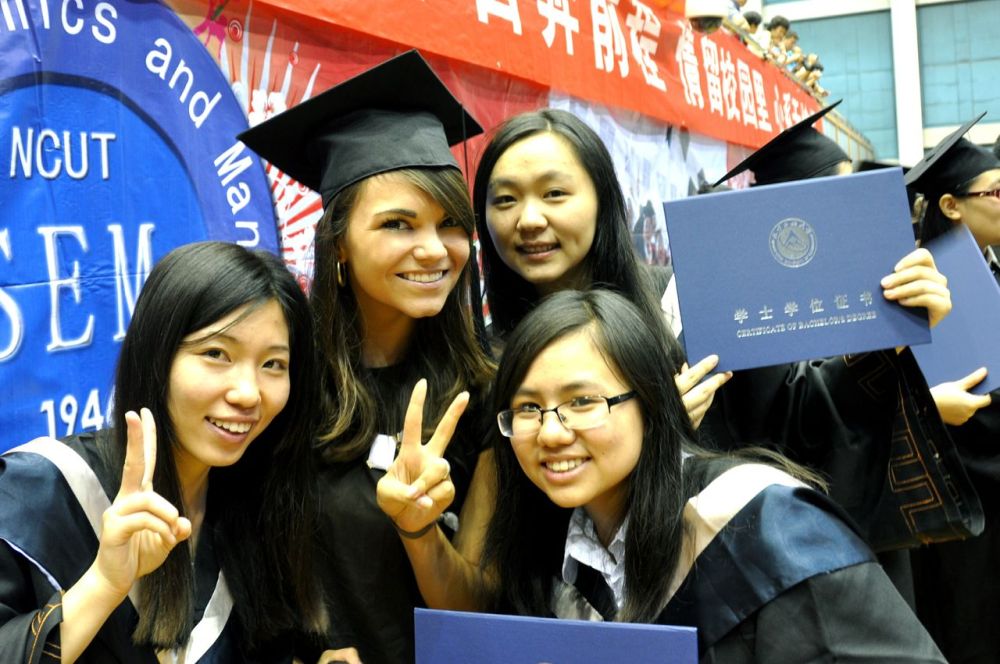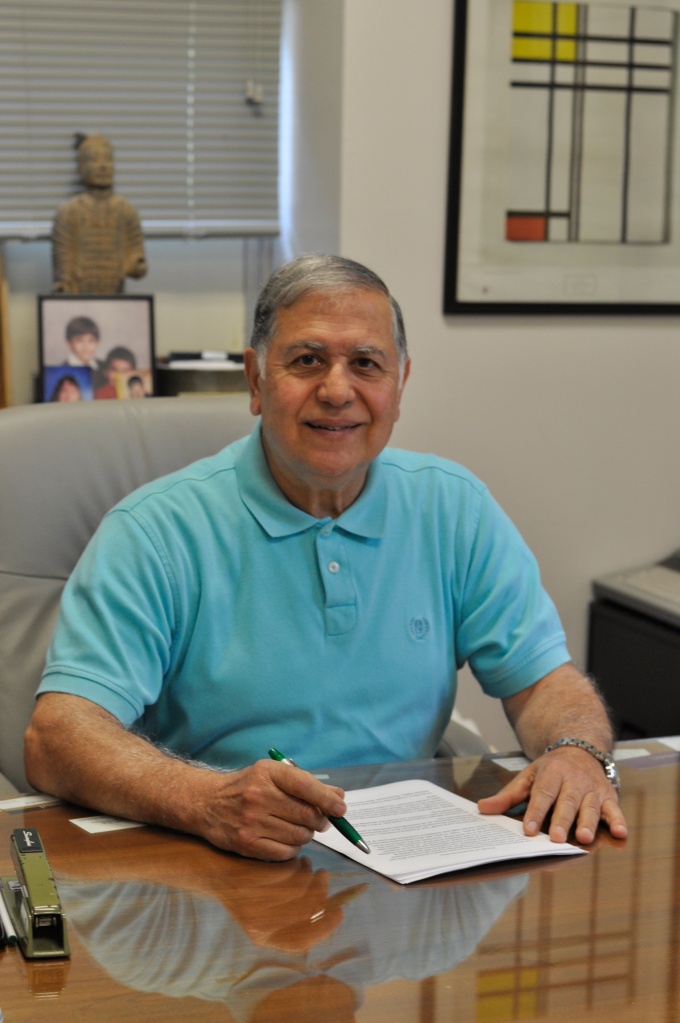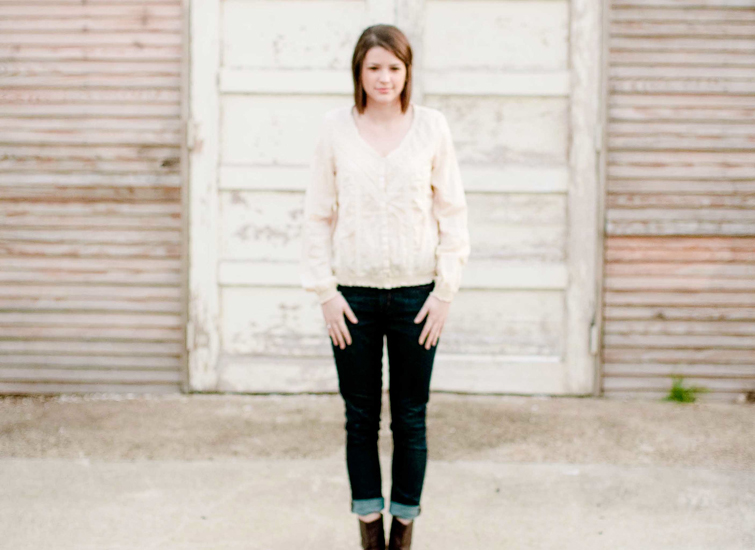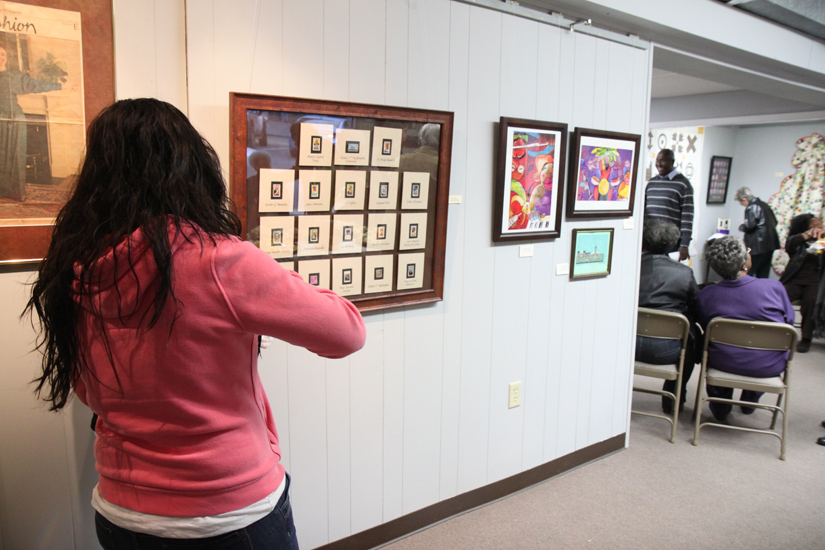 MOLLY BOWMAN poses for photos with three of her Chinese friends. Bowman spent the summer in Beijing interning for CCTV, working for ZDL and volunteering with different Christian ministry outlets.
MOLLY BOWMAN poses for photos with three of her Chinese friends. Bowman spent the summer in Beijing interning for CCTV, working for ZDL and volunteering with different Christian ministry outlets.
By Samuel Cushman, Signal News Editor
By the time summer rolls around, most students can be classified into two main groups. Once the school year ends, the first group will spend their well-earned vacation time to relax, spend time with friends and family and rest their minds before embarking on another year of academic pursuits.
For the second group, the school year never really ended. These students will instead choose to invest their time working to gain real-world experience through a job or internship in their field of study.
Ouachita senior mass communications and Christian studies major, Molly Bowman, belongs to the second group.
From June 10 to August 14 of this past summer, Bowman spent her time interning for CCTV, a state-run media outlet; working for ZDL, an organization that translates Christian literature into Mandarin and volunteering at a women’s rehabilitation shelter called Starfish in the 3000 year old Chinese capitol city of Beijing.
“CCTV is the big media conglomerate in China that was started by the Communist Party,” Bowman explained. “And when we think of an internship, we think of it as being super crazy and busy. But apparently, this was the first international internship they had done. Because of that there were a lot of security issues – they didn’t want a college student to work in the newsroom. So I worked in human resources and did outsource work. They would give me a project and I’d meet with my boss, and then they’d give me another project and so on.”
Once she had been given a project, she would work on it separately and come back once a week to start the process over.
“They called it circuit work,” she said. “Which is just a fancy way of saying that they give you a project and let you run with it.”
Bowman’s work with human resources included putting together publications for future foreign employees to help them adapt to Chinese culture and living in Beijing. Bowman compared her work to that of a journalist for a travel blog because she got to experience and write about many of the things to do in Beijing.
This summer wasn’t the first time Bowman has spent an extended period of time in Beijing. Bowman went to China as a sophomore through a program similar to Ouachita’s study abroad program. While there she was involved in discipleship and ministry. She said her previous experience in Beijing definitely prepared her for this summer.
“It was so much easier going back because I had already adjusted my expectations,” she said. “I also had a basic grasp of the language, so that helps a ton, because everything is so foreign and frustrating when you can’t communicate. It was definitely a very good thing. I had already found a church family from the time I spent there before. So it was almost like coming home in a lot of ways. I got to reconnect with a lot of people.”
Bowman had said her decision to work in China this summer had been motivated by several factors, including a desire to return and reconnect with some of the people she had met before. She had begun to look for opportunities to work in a media-related field where she could utilize the skills she had. She said she sent a lot of cold emails and used LinkedIn, because the website isn’t blocked in China.
“I found this [opportunity] through a friend of a friend,” she said. “I got the contact information of the guy who was the head of the HR department. I emailed him and said ‘Hey, I’m gonna be in China this summer, so if you’d like some help, I’d love to come intern.’”
Mr. Deborah Root, professor of mass communications, said that Bowman’s internship was an excellent opportunity for a Ouachita mass communications student.
“It’s wonderful that Molly had the opportunity to experience first hand the world of international communications,” she said. “She is extremely self-motivated, has a love for the people and culture of China and seizes every opportunity to better herself and those around her.”
In addition to working at CCTV, Bowman also took on a second internship because her work at CCTV was very “low key.” Through another friend of a friend situation, she was able to work at a Christian publication group called ZDL, which is a romanized initialism of the Chinese phrase “Zhao dao la,” which in English, translates to “I found it.” This name reflects their Christian intentions in reaching lost souls.
“ZDL is really cool,” Bowman said. “I didn’t even know it existed until I was in Beijing this time. They take theology books and Bible study books and they translate them into Mandarin and republish them legally in China.”
ZDL has published over 150 titles in the past 10 years and they have just recently finished the first John Piper book to be translated into Mandarin. For ZDL, Bowman would work on their graphic design and projects teams, but she also said her job went beyond mere publishing work.
“While I was there, they were putting together a camp for Chinese high school students to come to California for two weeks during their Spring festival in January,” she said. “They’re going to do a Young Life camp and tour some universities and the Google and Apple campuses. They’ll also spend a week at the Young Life English camp where they’ll also hear the Gospel.”
Her job at ZDL also involved coordinating with Young Life to help make this happen. Bowman also spent time volunteering. One of the people she met was Grace Lee, the head of a ministry called Starfish. Starfish is a Christian organization that ministers to and builds relationships with women in brothels.
“They basically try to convince them that they can make a better life for themselves,” she said. “So then, once the women decide to come out, they offer a shelter home for them and teach them English and small business skills. They also teach them how to make and sell jewelry.”
In addition to working at Starfish, Bowman also spent time volunteering for an orphanage for the visually impaired, called Bethel, where her friend Chloe Banks serves as the communications director.
Bowman’s schedule involved working for CCTV or Starfish and Bethel on Monday, Wednesdays and Fridays and ZD on Tuesdays and Thursdays. She said her routine would change everyday. While in Beijing, she lived on the fifth floor of an apartment building in a three-bedroom apartment with two other American girls. The neighborhood she stayed in was in inner-city Beijing and is known as Wu Dao Kou. It is a condensed and heavily-populated area with a large number of universities.
Beijing had millions of university students in the city,” she said. “Which is one of the reasons my international church is located there. They want to reach this population of international students. It kind of gave me a new appreciation for being on the other side of the international community.”
When it came to navigating Beijing and the Chinese culturescape, Bowman utilized public transportation and a bicycle to get her to destinations. She said her most valuable asset in all of this was having a base understanding of Chinese.
“It’s a really difficult language,” she said. “But life in Beijing is so much easier if you have those basic terms down. Like if you can tell a taxi driver where to go, it makes the whole thing way easier than trying to explain it to him without language. Or just knowing how to order off of a menu or just doing those basic daily tasks. The culture stress is way higher if you don’t know the language.”
“It’s also important to understand that people should never be the background. Often when you’re in such a populated place it’s easy to get overwhelmed with all the people crowding around you, especially when you’re in a hurry. Which isn’t a good way to live.
“I would often catch myself and be like ‘this is stressing me out because I’m not seeing these people as people.’ The most important thing, I think, was to remember that each person has a story and each person has a life.”



